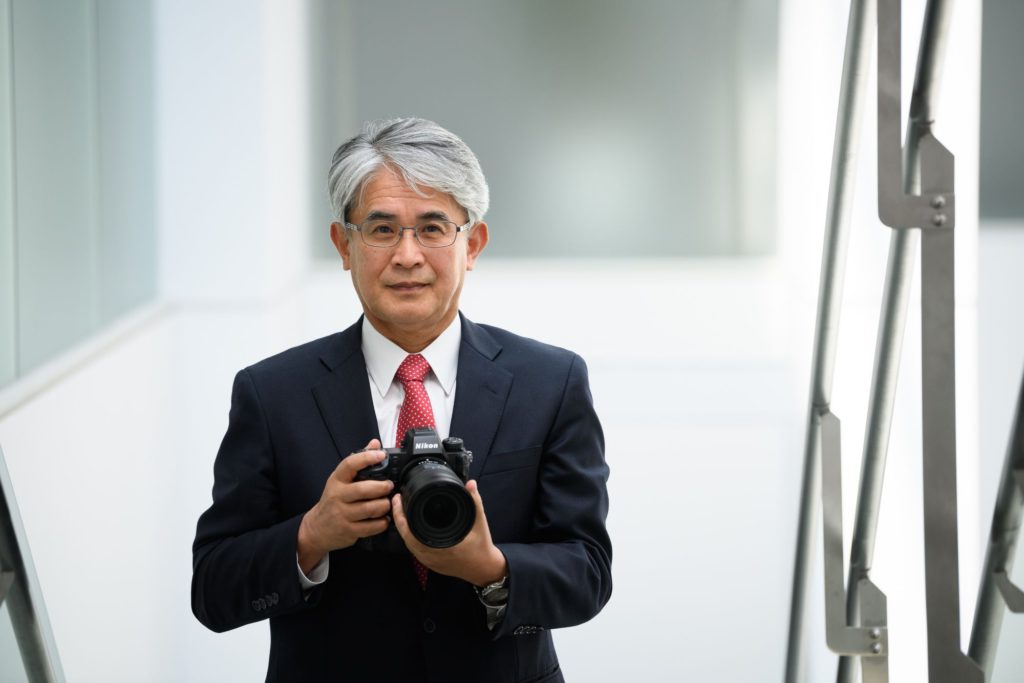(Bloomberg) — Nikon Corp., known for its cameras and optical equipment, is embarking on a corporate transformation that might make it less of a household name and more of a supplier of components to other businesses.
“Most people think of us as a camera company, but historically when we were founded we supplied parts for other companies,” Chief Executive Officer Toshikazu Umatate said in an interview. Now, the line between business-to-consumer and business-to-business activity “isn’t as clear anymore,” he said.
Founded in 1917, the manufacturer almost single-handedly brought accessible high-quality cameras to the masses, joining the ranks of Sony Corp., Toyota Motor Corp. and other brands that made Japan the world’s second-biggest economy in mere decades from the rubble of war. But the rise of smartphones and more advanced chipmaking technology — where Nikon once was a leader — has taken its toll on revenue, which has shrunk by roughly 50% from a 2013 peak of 1 trillion yen ($8 billion).
To reverse that trend, Umatate, 66, is seeking to reposition Nikon as a provider of components for the chipmaking industry, advanced materials and health care products, along with related services — all while seeking to retain its presence in the digital camera market. In Nikon’s mid-term plan announced last week, the CEO targeted operating profit of 70 billion yen on sales of 700 billion yen in fiscal 2025, up from its forecasts for 47 billion yen and 550 billion yen for the fiscal year that ended March 31.
Part of that will involve mergers and acquisitions. Umatate said he’s set aside 200 billion yen to 300 billion yen for deals, possibly involving some of more than 100 billion yen. The CEO’s plan for Nikon’s transformation doesn’t call for any job cuts. Instead, he’s seeking to retrain and refocus the company’s staff of almost 20,000. In fact, Nikon plans to double domestic hiring for the current fiscal year, to 570 employees, the most in a decade.
“We need more people with experience, knowledge, and fresh new graduates,” Umatate said.
Light-Based Products
Booming demand for semiconductors and related chipmaking equipment is also bolstering Nikon’s growth outlook, even though it no longer offers the most advanced lithography equipment machines that etch circuits onto chips.
While Nikon and rival Canon Inc. once competed in the market, ASML Holding NV now dominates the top end of the market. The Dutch manufacturer successfully developed machines that use a technology called extreme ultraviolet lithography, enabling Intel Corp., Samsung Electronics Co. and others to create the most advanced chips found in devices.
Even so, Nikon plans to retain a role in the EUV ecosystem by providing inspection equipment and related light-based products, according to Umatate. “Demand is much more than I had anticipated, and since last year, we have ramped up production” of EUV-related equipment, he said.
Transitions between Nikon’s consumer-oriented and industrial equipment businesses have happened multiple times in Nikon’s history, said Umatate, who joined the company in 1980 and later led its lithography unit. “For the last 10 to 15 years, digital cameras became a large business, but before that lithography machines were more profitable in the 80s and 90s,” he said.
Nikon also has some nascent technologies that could seed future growth. One is Lasermeister, a 3-D printer that uses lasers to create titanium-alloy parts. Another is riblet processing, which creates microscopic surfaces that act like artificial shark skin to dramatically reduce friction, potentially energy-saving technology that boosts the efficiency of surfaces on car bodies or wind turbines.
Even as Nikon transitions into these areas, the common thread running through these products is that all involve the use of light in one way or another.
“Up until now, if we were to sell a product with advanced features, then people would buy it and use it as they see fit,” Umatate said. “But now, it’s more about what you want to accomplish with the product.”
More stories like this are available on bloomberg.com
©2022 Bloomberg L.P.











